10 Ways to Use the Schema Theory in eLearning
Schema theory describes how learners organize knowledge as mental frameworks (schemas) to interpret new information. Here is how you can use it in eLearning.
Schema theory describes how learners organize knowledge as mental frameworks (schemas) to interpret new information. Here is how you can use it in eLearning.

Online learning is becoming increasingly competitive due to innovations in the industry. Every day, we see a new course or instructional design tool being launched in the market, making it hard for good content to stand out.
If you’re an instructional designer or course creator, you should aim to create memorable, high-impact online courses that actually educate learners. Schema theory can help you with that.
Schema theory explains how people organize and interpret knowledge as mental frameworks called schemas. These schemas directly influence how learners make sense of new material, recall information, and apply skills at work. Activating and expanding these schemas leads to more effective eLearning: learners retain knowledge better, learn faster, and transfer skills with confidence.
In this post, we will explore 10 practical, research-backed ways to use schema theory in eLearning programs. Let’s dive in.
Schema theory refers to the mental structures that organize knowledge and experiences. When learners encounter new information, their brains automatically try to connect it to what they already know: their existing schemas.
This is why prior knowledge matters so much in learning. If new facts fit naturally into established schemas, comprehension and recall are quicker and deeper.
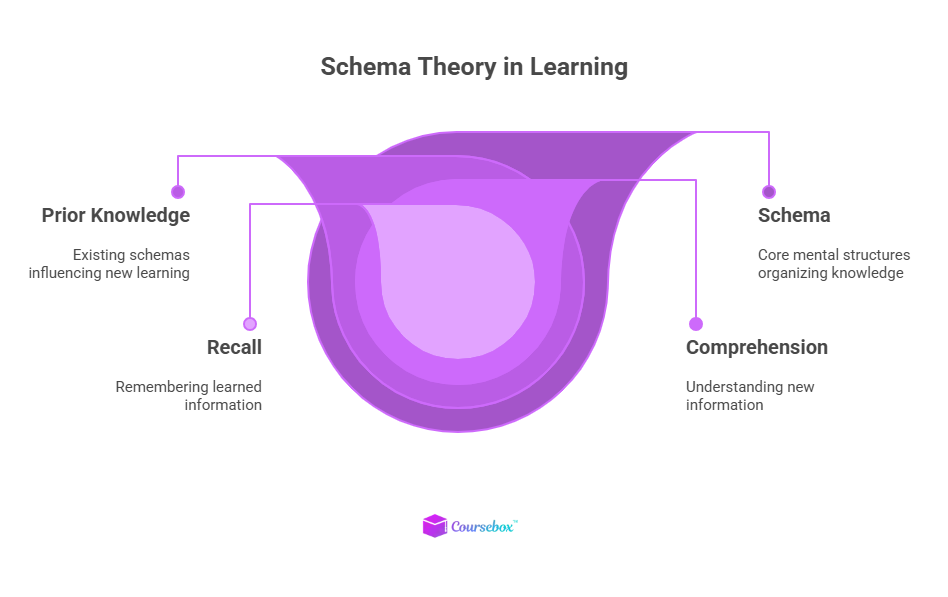
Schema theory was originally proposed by Bartlett and further developed by Piaget. In adults, schemas are complex and widespread, having been built over years of experience. As an instructional designer, you must understand and activate these schemas to make eLearning truly meaningful and efficient for your learners.
In digital learning environments, learners are often bombarded with information. Without a way to connect new concepts to relevant schemas, they may feel overwhelmed or disengaged from the material.
Schema-centered design helps you avoid information overload by building bridges from what learners know to what they need to know. Learners who can tap into their prior experiences stay motivated, confident, and actively engaged throughout a course.
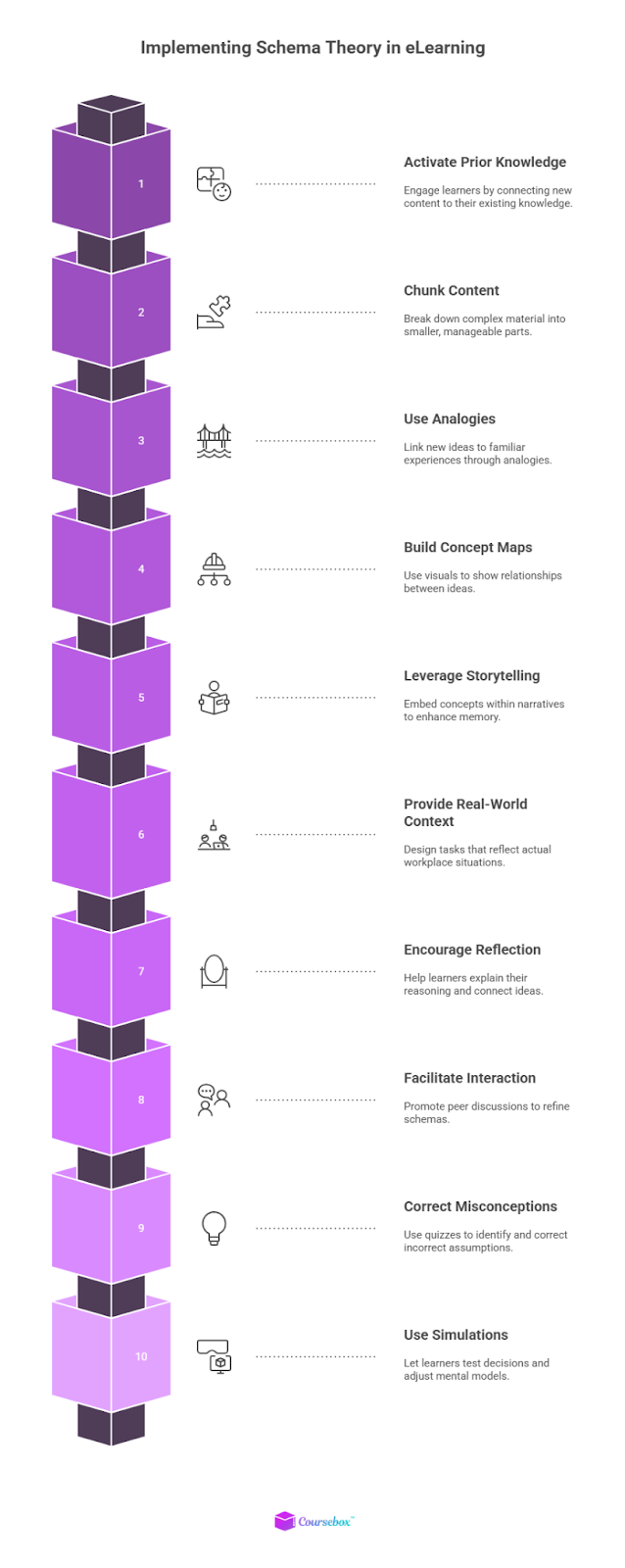
Here are some ways you can leverage schema theory as building blocks when creating or updating your digital training.
Activating learners’ prior knowledge is a fundamental way to put schema theory into action. By prompting learners to recall or discuss relevant past experiences, you encourage their brains to bring forward existing schemas that can anchor new information.
Starting a lesson with discussion prompts, flashback scenarios, or quick pre-assessments sets the stage for meaningful learning. For example, a cybersecurity module might begin by asking learners to recount their own experiences with phishing emails or online scams. This helps connect new material to what they already know.
Such activation can take many digital forms, including online discussion boards, brief surveys, and interactive brainstorming activities.

Chunking is the process of breaking down complex information into smaller, more manageable units so schemas can develop without overwhelming cognitive resources. Scaffolding extends this by creating supportive steps that gradually introduce more challenging content.
Rather than presenting an entire process at once, you can introduce concepts in logical order. It could be from simple to complex or from general to specific. Doing so will support learners as they build robust schemas.
Analogies help bridge the gap between the familiar and the unfamiliar, a core element of schema theory. By relating new ideas to existing schemas, analogies make abstract or technical content accessible.
Scenarios rooted in real-life problems enable learners to map new content onto their daily mental frameworks. In eLearning, interactive scenarios or branching case studies are a direct route to schema building.
For example, a healthcare compliance course can use relatable patient interaction stories, allowing learners to “step into” realistic situations and apply their growing understanding. These stories prompt learners to recall prior experience, compare it to the scenario, and adapt their schemas with every decision made.
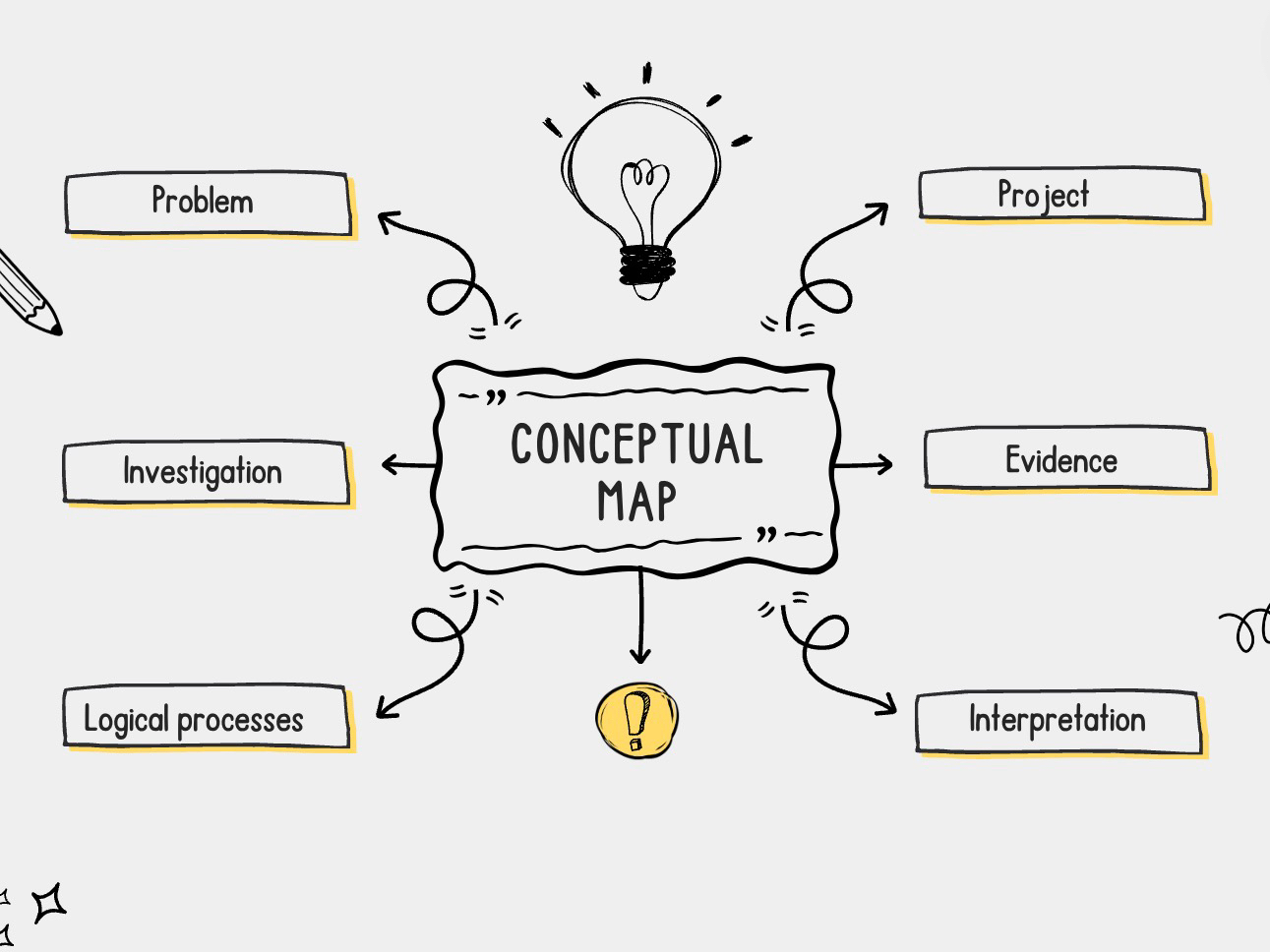
Visualizing relationships is a powerful schema-building activity. Concept maps and graphic organizers help learners organize new information, illustrating how it connects with what they already know.
By mapping out processes, categories, or cause-and-effect relationships, learners externalize and reconstruct their internal schemas. This makes the invisible paths of thought visible and accessible.
Storytelling has an innate ability to create cognitive “hooks” for new information via schema theory. When you embed new concepts in engaging narratives, learners naturally link course material to existing personal and professional stories in their lives.
A good story gives learners a framework onto which they can hang facts, processes, and new perspectives.
In eLearning, you can leverage multimedia storytelling through audio, video, or rich text scenarios that mirror real job challenges. For example, a business ethics module may unfold as a serial narrative, with learners guiding a protagonist through dilemmas and reflecting on their own relative experiences. This emotional and cognitive engagement makes new schemas stronger and more easily retrievable when needed.
Contextualization grounds abstract learning in authentic, meaningful situations. If new material feels disconnected from learners’ roles or needs, it’s less likely to be remembered. You can embed lessons in real-world tasks, such as customer inquiries, equipment troubleshooting, or compliance reporting, to make learning relevant and memorable.
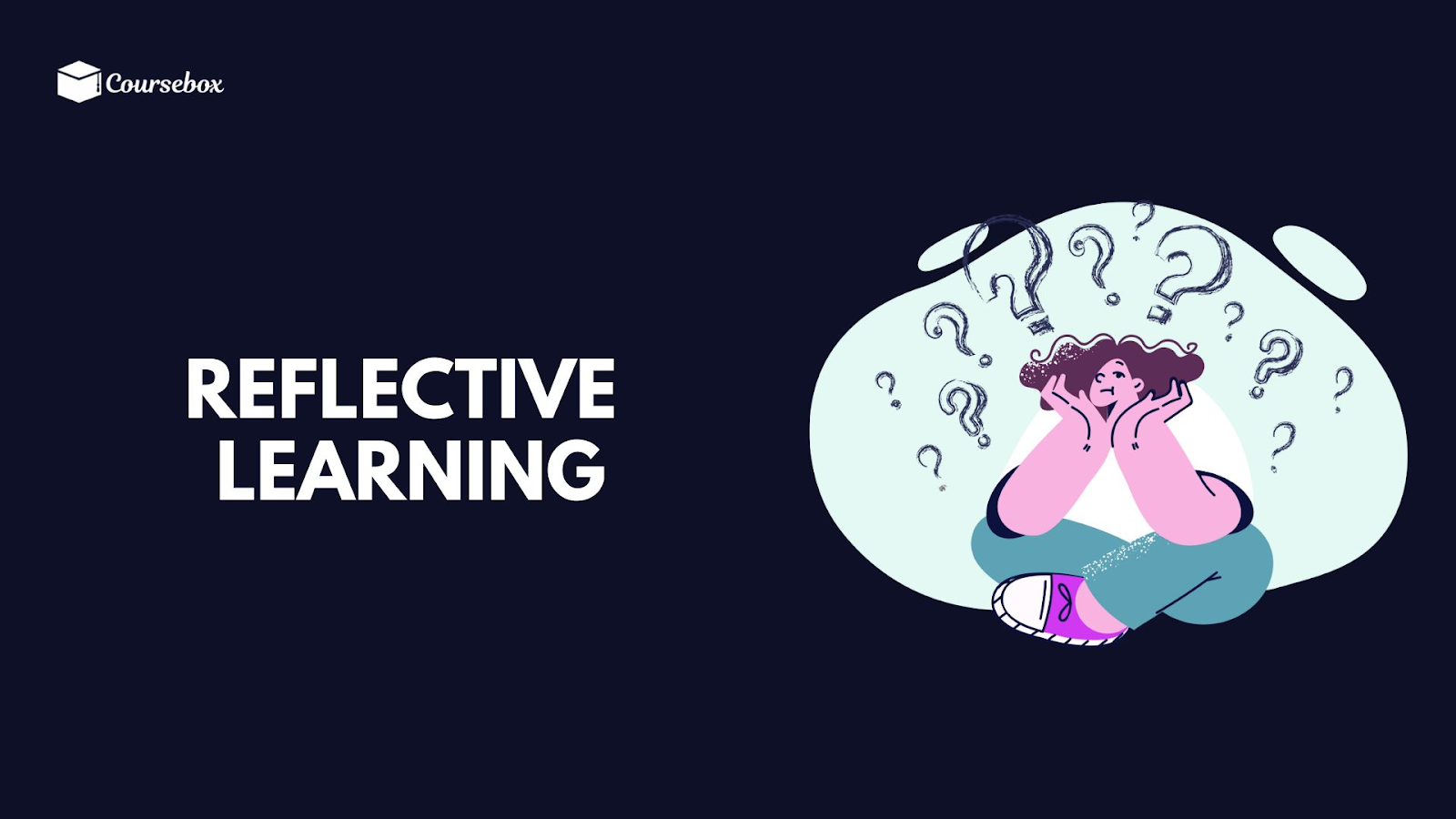
Reflection prompts learners to pause and consciously connect new information with what they already know, facilitating schema modification or expansion. Self-explanation is the act of articulating reasons or strategies behind decisions and problem-solving. Both processes deepen engagement and strengthen schema connections.
You can implement both strategies in eLearning through reflection journals and discussion threads. It will lead learners to analyze, question, and reshape their schemas. Over time, this promotes expert-like thinking and far transfer.
Learning is inherently social, which is a principle underlined by schema theory. Discussions, debates, and peer-to-peer reviews expose learners to a diversity of schemas, challenging them to reconcile differences and fill gaps in their own understanding.
Social learning encourages schema negotiation and reinforcement, thereby enhancing the depth of learning. For instance, a peer review activity in a creative writing course lets participants experience and critique multiple perspectives. This helps build richer, more flexible schemas together.
Sometimes learners’ existing schemas are inaccurate or incomplete. Schema theory recommends surfacing these misconceptions so they can be corrected, avoiding future errors.
Diagnostic quizzes, case-study debates, or simulation-based assessments are powerful tools for spotting and repairing faulty schemas. In practical terms, an eLearning safety course might begin by having learners identify hazards in a simulated workspace. Immediate feedback highlights any misidentifications, prompting learners to adjust their schemas.
Simulations and branching scenarios immerse learners in meaningful practice, allowing active experimentation with mental models in a safe environment. Learners can explore potential consequences, adjust their strategies, and see immediate results, turning abstract concepts into robust and flexible schemas.
For example, a leadership training simulation can put learners in charge of resolving a conflict, offering multiple choices and real-time feedback. As they try different strategies and reflect on the outcomes, learners refine and expand the schemas they’ll later draw upon in real situations.
Schema theory unlocks the secret to effective learning: connect, repeat, and apply new knowledge within meaningful mental frameworks. Every time you activate prior experience, use stories, visualize concepts, and encourage learner-generated content, you help learners build powerful schemas that last.
Coursebox makes it easy to harness schema theory throughout your eLearning workflow. Its AI-powered tools help trainers design effective pre-assessments, scaffold modules, and provide personalized learning journeys tailored to individual schemas.
Coursebox offers interactive quizzes, grading tools, and an AI chatbot tutor to support instant feedback and peer collaboration in your courses.
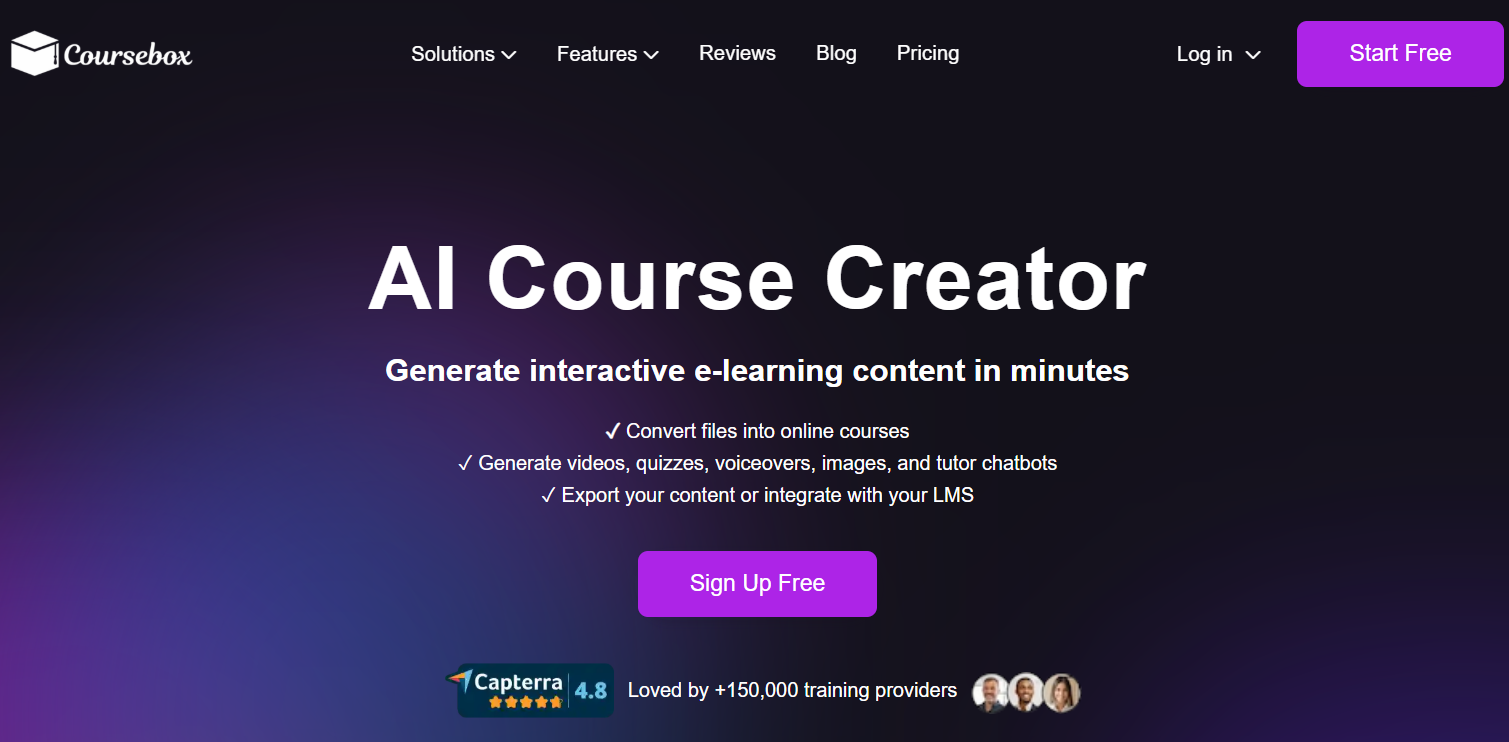
With Coursebox’s intuitive design and smart automation, you can put these practical strategies to work right away. Sign up for free now to use schema theory in eLearning in the best way.
Schema theory explains how learners organize knowledge into mental frameworks, known as schemas. This helps learners interpret, store, and retrieve new information more efficiently. In eLearning, understanding schema theory is crucial because lessons that link to prior knowledge or real-world experiences tend to be remembered more effectively and applied more confidently. By tapping into or developing these mental structures, instructional designers can boost engagement, retention, and critical thinking in digital courses.
Activating prior knowledge is a practical application of schema theory. Instructional designers can use pre-assessments, scenario-based questions, or reflective prompts at the start of each module to encourage learners to recall related experiences. This process prepares learners to connect new ideas with existing schemas, setting a solid foundation for understanding and absorbing new material.
Schema theory shows that learners often arrive with preconceived ideas or misconceptions stored in their mental frameworks. The best way to address these is to surface misunderstandings through diagnostic quizzes, practical scenarios, or open discussions, and then provide targeted feedback and corrective experiences.
Coursebox’s AI-powered features make schema-based learning easy and effective. The platform features interactive quizzes, AI assessments, and an AI-powered chatbot tutor. These tools enable instructors to develop interactive pre-assessments and branching scenarios that help learners make connections to their prior knowledge and experiences.
